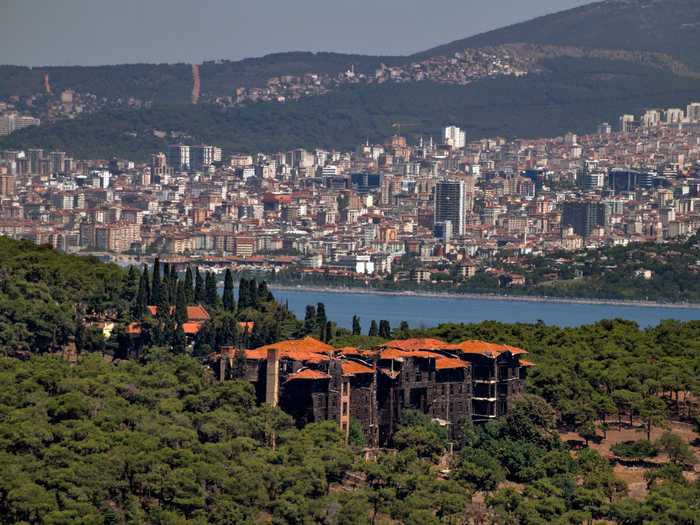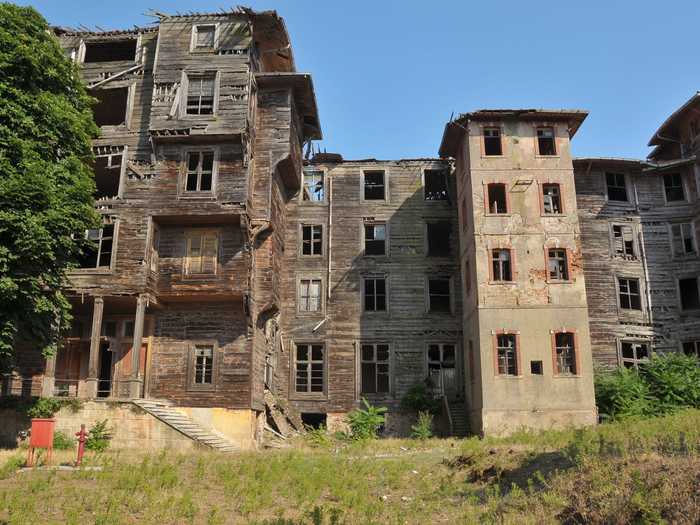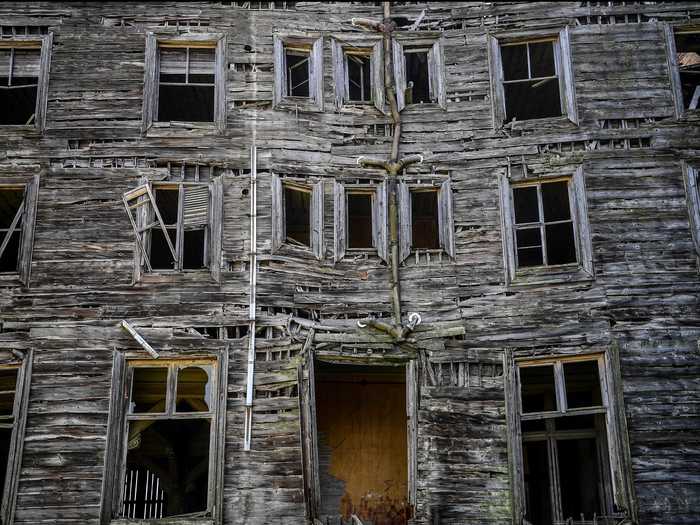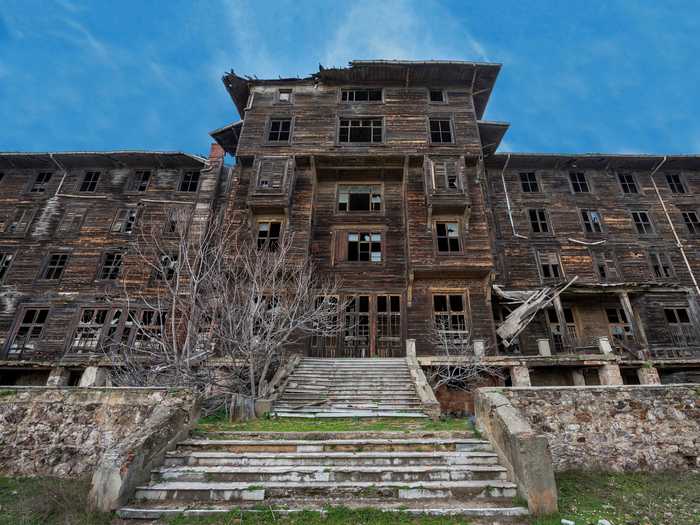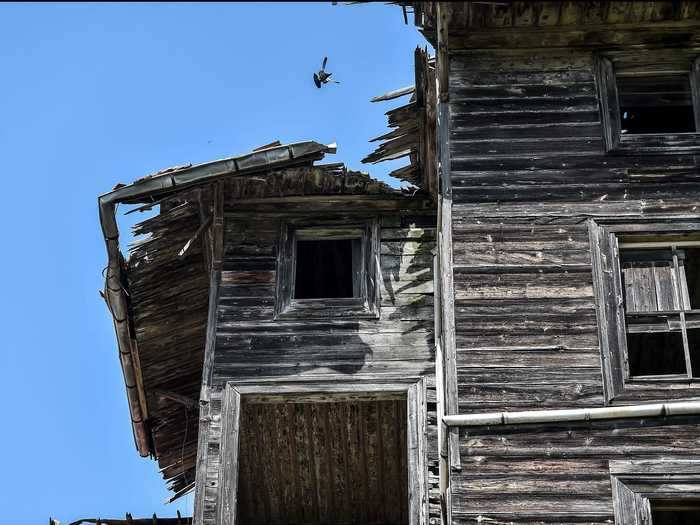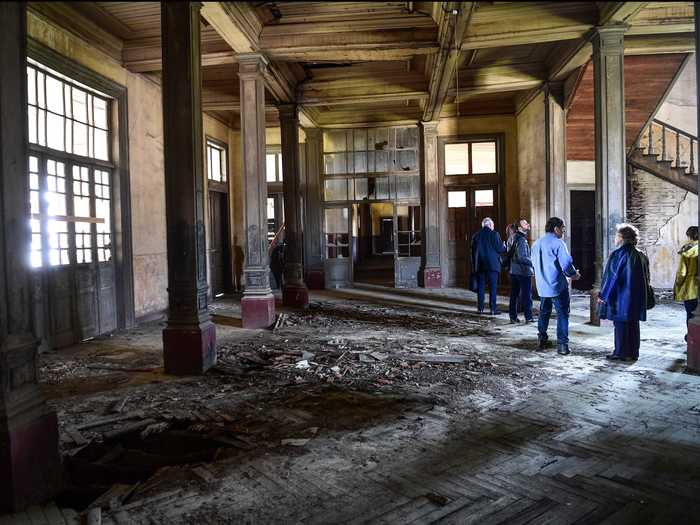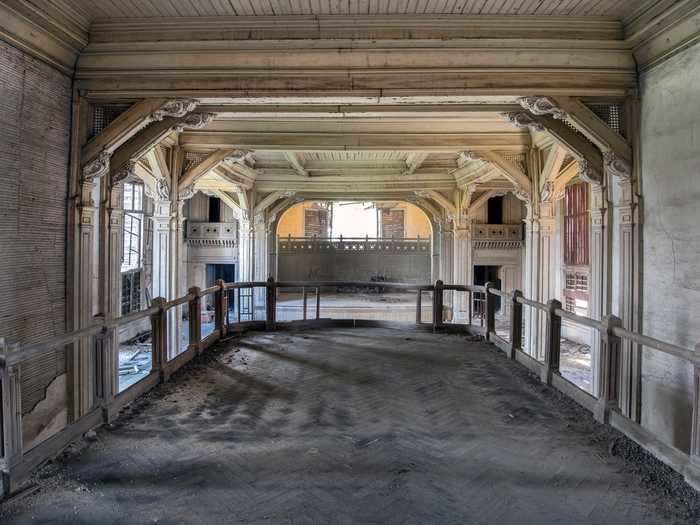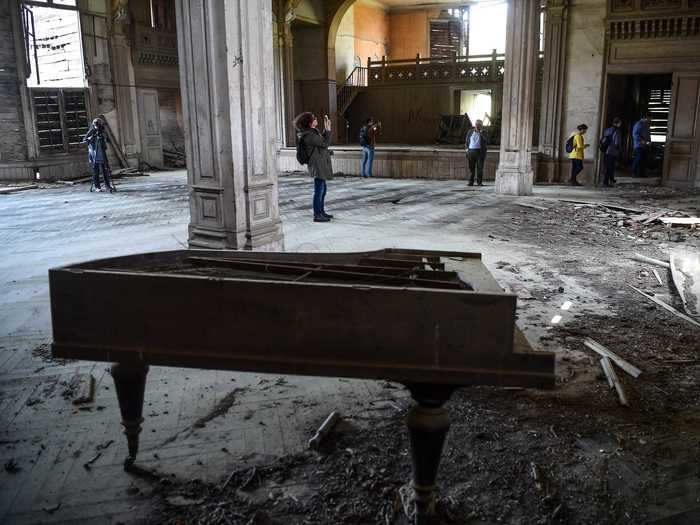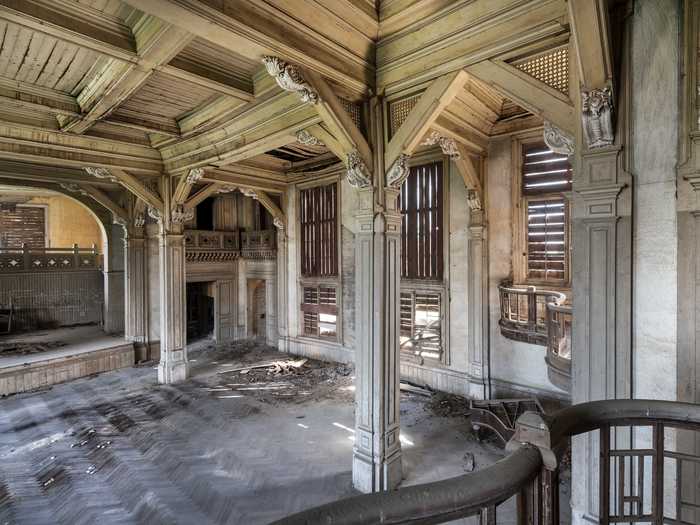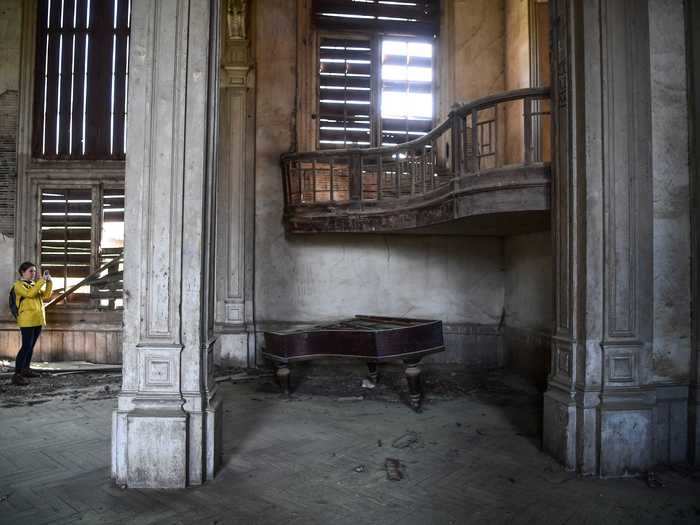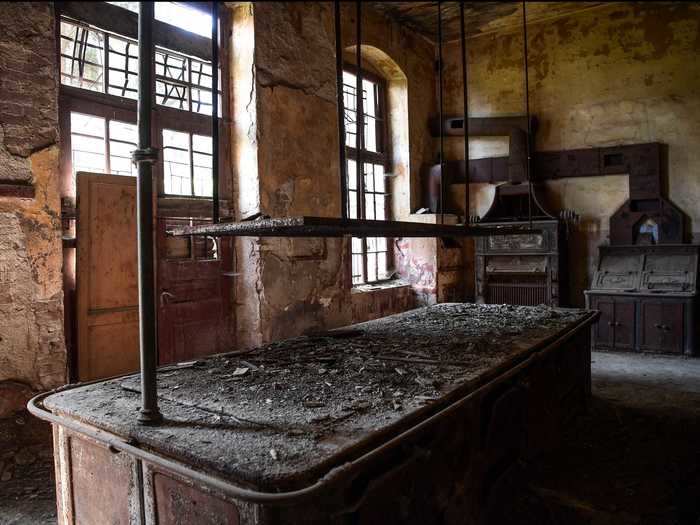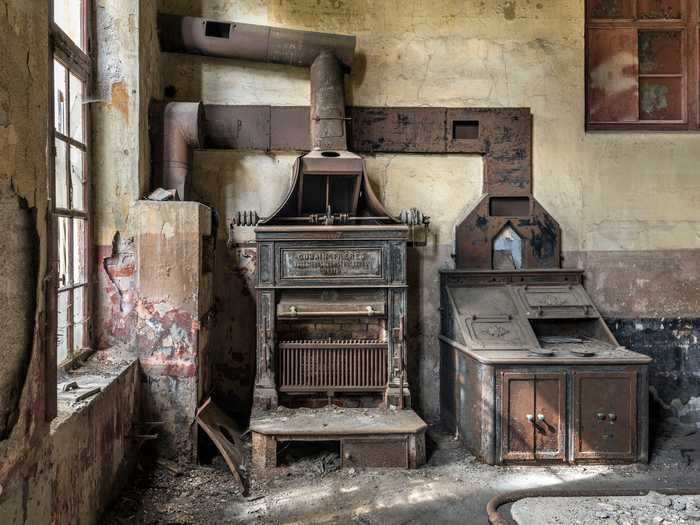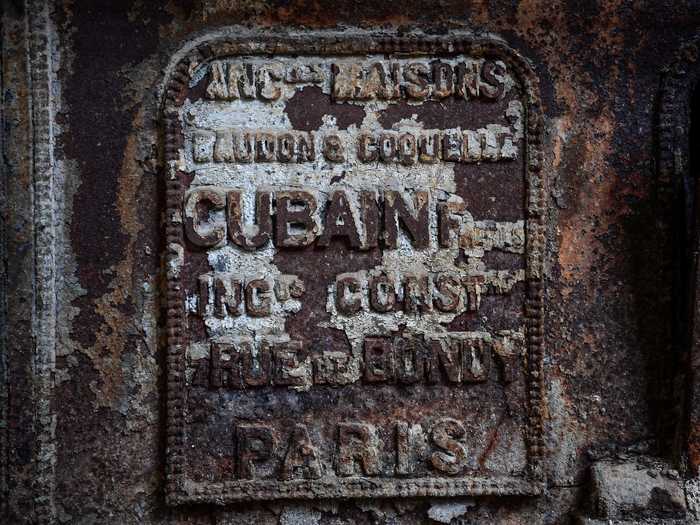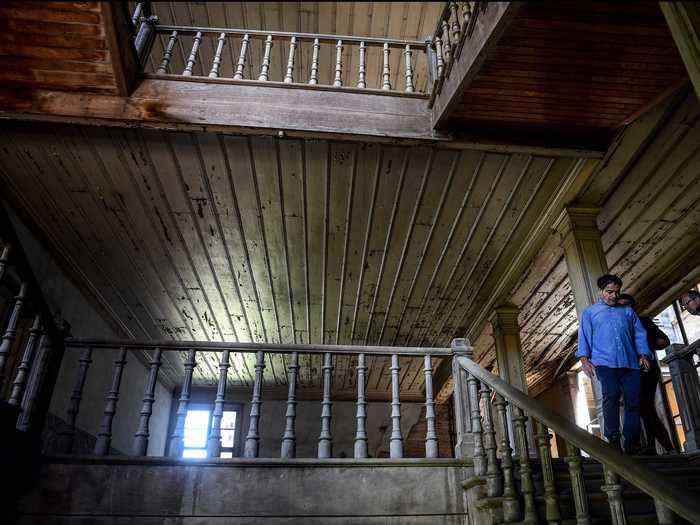Outside Rum Orphanage, Turkey.Ozan Kose/AFP via Getty Images
- Rum Orphanage is located on Büyükada, an island in the Sea of Marmara, near Istanbul, Turkey.
- The orphanage operated from 1903 until 1964.
- The building was abandoned until 2012, when it was announced that it would be restored and turned into an environmental institute.
- The building is believed to be the largest historic wooden building in Europe, bolstering efforts to restore it to its former glory.
Rum Orphanage, also known as the Prinkipo Greek Orphanage, was a Greek Orthodox orphanage. Located on the island of Büyükada near Istanbul, it housed children between 1903 and 1964.
Since it closed more than half a century ago, the orphanage has fallen into a state of disrepair. Both the exterior and interior of the massive building have begun to crumble after years of weathering.
At about 215,000 square feet, the orphanage is believed to be the largest wooden building in Europe, according to the World Monuments Fund. A restoration effort to turn the building into an environmental institute was announced in 2012.
Take a look at the former Rum Orphanage and its complicated history.
Rum Orphanage is located on the island of Büyükada, near Istanbul, Turkey.
An aerial view of Rum Orphanage.
Izzet Keribar/Getty Images
Büyükada is the largest of the nine Princes' Islands.
The orphanage was designed and built in 1898 by Alexandre Vallaury.
Rum Orphanage.
Pascal Saez/VW Pics/Universal Images Group/Getty Images
Alexandre Vallaury was a famous French-Ottoman architect who designed a number of notable buildings in Istanbul including the Istanbul Archaeology Museum, Pera Palace Hotel, Hidayet Mosque, and the Ottoman Bank.
At about 215,000 square feet, the building is believed to be the largest wooden building in Europe.
Outside Rum Orphanage, Turkey.
Ozan Kose/AFP via Getty Images
The building was originally designed to be a luxury hotel and casino for Compagnie Internationale des Wagons-Lits.
Rum Orphanage.
Izzet Keribar/Getty Images
Compagnie Internationale des Wagons-Lits was a passenger train company that ran The Orient Express. According to the World Monuments Fund, the company was unable to obtain a permit to operate from Sultan Abdul Hamid II, and the building was sold in 1903.
The building was bought and donated to the Ecumenical Patriarchate of Constantinople, which turned it into an orphanage.
Broken wood outside Rum Orphanage.
Ozan Kose/AFP via Getty Images
The orphanage operated for over 60 years, between 1903 and 1964.
Inside Rum Orphanage.
Ozan Kose/AFP via Getty Images
The orphanage was home to almost 6,000 Greek children during its lifetime, according to Atlas Obscura.
Inside Rum Orphanage.
Izzet Keribar/Getty Images
The orphanage had around 220 rooms in total, including the large ballroom, pictured above.
"It was a nest that picked up wounded children," a former resident told Espresso News.
The theater room in Rum Orphanage.
Ozan Kose/AFP via Getty Images)
Theodoros Tsamouris, who lived at the orphanage for six years between 1946 and 1952, told Espresso News, "The most important thing is that even today those of us who went through the orphanage have very strong friendships. In there we found what we were missing: the family."
The orphanage was forced to close in 1964, due to rising tensions between Turkey and Greece.
Inside Rum Orphanage.
Izzet Keribar/Getty Images
The Cyprus issue, a conflict between Greek and Turkish Cypriots, led to rising tensions between the Greeks and Turks in 1963 and onwards.
According to Espresso News, the children were forced to leave in the middle of the night.
The theater room in Rum Orphanage.
Ozan Kose/AFP via Getty Images
Nikos Ouzounoglou, president of the Federation of Istanbul Citizens, told Espresso News, "In one night they took out all the orphans and drove them out in the middle of the night. Teachers and children took refuge in the first phase at the nearest point, in the Monastery of Christ, to find shelter."
The orphanage was then abandoned, and it was left to crumble for more than half a century.
Inside Rum Orphanage.
Ozan Kose/AFP via Getty Images
The gigantic wood structure was left to rot.
In 1980, a fire badly damaged the building, further contributing to its state of disrepair.
The kitchen in Rum Orphanage.
Ozan Kose/AFP via Getty Images
The former orphanage was seized by the Turkish government in 1997, according to Atlas Obscura.
The kitchen in Rum Orphanage.
Izzet Keribar/Getty Images
However, just over a decade later, in 2010, the European Court of Human Rights ordered that the property be returned to the Greek community.
In 2012, the Greek community announced that it would turn the orphanage into an environmental institute.
A close-up shot of the oven in Rum Orphanage.
Ozan Kose/AFP via Getty Images
The cost to save the property ranges in the tens of millions of euros, according to a report by Europa Nostra.
The staircase in Rum Orphanage.
Ozan Kose/AFP via Getty Images)
A report by Europa Nostra stated, "At present, it is extremely difficult to have a precise figure about the investment costs necessary to complete the project. There are many caveats and uncertainties making impossible to provide a reasonable and fair estimate of the full project costs. However, on the basis on the opinions expressed by of several external experts, it is reasonable to expect the project to require a total investment of at least €40 million (a figure that, depending on many factors, could be much higher)."
In 2018, Europa Nostra placed the property on its Seven Most Endangered cultural heritage sites list.
Outside Rum Orphanage.
Ayhan Altun/Getty Images
However, according to Amusing Planet, a "lack of funds and the continued political tensions between Greece and Turkey over a variety of issues, including the protection of Byzantine and Greek heritage in Istanbul, has delayed preservation attempts."

